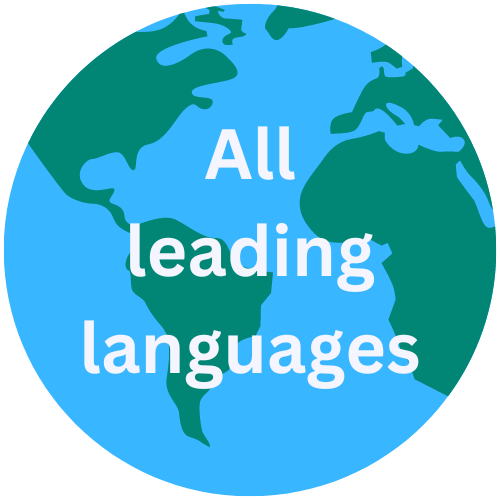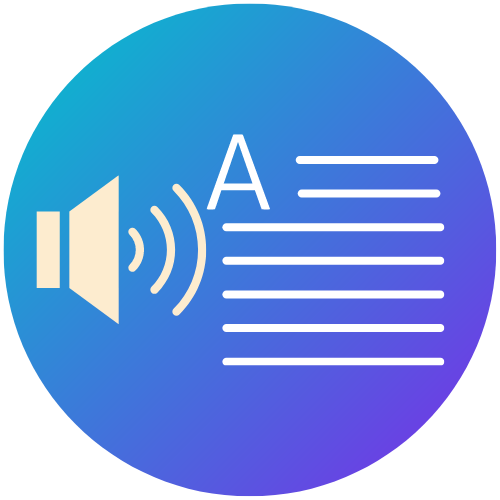Here is a look into the changing scenario of the localisation professional. Know how AI is hurting localisation professionals, financially and psychologically
Written by: Sanjay Shah
Everyone is talking about AI, and quickly, its influence is spreading across professions. Localisation is no exception—and not in a good way. If you are a translator or a localisation professional, you probably already feel the pinch. Financially and mentally, AI is creating serious challenges.
Since AI has entered the field, localisation has turned into a free-for-all. Many believe that with AI, anyone can be a translation expert. But the reality is far from it.
The Rise of Mistrust and Accusations
Let me speak from personal experience, as well as that of my fellow translators. Many of us have spent years mastering languages and honing our skills, with a deep love for words and writing. While translation work in India has never been very lucrative, passion has kept us going. Now, however, with AI entering the scene, translators are being dismissed as little more than glorified button-pushers.
What’s worse? Clients frequently accuse translators of using AI for their work, without any real evidence. “This doesn’t feel human!” they say. Such accusations are not only untrue but deeply demoralising. Translators invest time and effort to ensure their translations breathe life into the text. But being wrongfully blamed for using AI is a slap in the face.
AI vs. Human Translation: A False Comparison
Yes, AI can translate, and in many languages, too. I use AI as a tool, like dictionaries or search engines, to refine my work. But to expect AI to take over me, my human creativity is simply unrealistic and impossible. AI can provide basic, no-frills translations, but it falls short in more complex languages. For example, if you ask AI to translate from English to Hindi, Gujarati, or Marathi, the results can be laughably inaccurate.
Once, I tried an AI tool for an English-to-Gujarati translation, hoping it would save me some time. The output was so absurd, I scrapped it entirely and did the work myself. The time spent fixing AI’s errors would have taken longer than translating from scratch! This experience highlighted just how far AI is from being a viable substitute for human translators, especially for languages like ours.
AI’s Struggles with Indian Languages
AI has a clear bias towards English. It struggles mightily with Indian languages, where the grammar alone is a minefield. I have seen AI make embarrassing errors in Hindi, Gujarati, and Marathi—errors that require more than minor adjustments. These translations often need to be rewritten from scratch.
Imagine the frustration for a professional translator who has to prove that their work is human-made, all because AI’s limitations lead to subpar results. This constant need to justify oneself drains both time and energy.
The Personal Cost: Translators Losing Work and Motivation
The larger issue here isn’t just AI’s shortcomings in translating. It’s what AI’s growing presence is doing to translators on a personal level. Seasoned translators, who have spent years perfecting their craft, are now struggling to retain clients or find new work. Clients increasingly believe that AI can handle translation, reducing the profession to a quick-fix service, devoid of any real human value.
The worst part? Many translators are being wrongly accused of using AI to cut corners, even when they haven’t. This not only hurts financially—because losing clients means losing income—but it also takes a psychological toll. When your hard work is undermined by assumptions and accusations, it’s disheartening.
Many translators are reconsidering their careers. They have already been underpaid and undervalued for years. Now they are being mistrusted. Translation, which was always a thankless job, is now being dismissed as something any AI can handle.
The Double-Edged Sword of Indian Languages
In India, translation has an added layer of complexity. Our languages are often written in two distinct ways. The first is pure, native-language writing, where most of the words come from the original language. The second is a hybrid, incorporating many English words into the text.
Clients rarely specify their preference when assigning translation work. But after receiving the translation, their radar goes into overdrive, and translators are often blamed regardless of the approach.
If a translator sticks to the original language, they might hear, “Samajh mein nahin aata kya? Don’t you know? Everyone in India uses English for that term! Why did you translate it?” On the other hand, if the translation includes English words, the translator is criticised for ‘anglicising’ the work. It’s a no-win situation.
AI Can’t Replace Human Expertise
Let’s be clear: AI is not going to replace good translators anytime soon. AI lacks the creativity, sensitivity, and cultural understanding needed for high-quality translation. It can’t take a poem in Gujarati and translate it into something equally profound, lyrical in English. It can’t understand the nuances of humour, puns, or the spirit of a piece. It can’t even understand, in most cases, that many Indian words are used for several expressions, just as they are in English. For example, તાળ (TAAL) in Gujarati has meanings like a kind of palm-tree, a tap (or rhythm), joy, a chance, a trick, or a conspiracy. So is the case with many words in other Indian languages like Hindi, Marathi, Tamil, and Telugu. All I can say is that AI can’t understand, as we say in Hindi, “apne saat janam mein bhi.” So, just shut up, AI and AI advocates.
At best, AI can give you a mechanically correct sentence, but it will lack soul. That might be fine for routine tasks, like understanding a basic product description. Even then, AI can often go wildly wrong. For any meaningful, impactful localisation, you will always need a human touch.
Think of AI as a ready-made costume. It may look good, but it will never fit like a custom-tailored suit. No matter how well AI seems to perform, it can’t match the precision and personalisation of a human-crafted translation.
Where AI Can Help
That said, AI does have its uses. Here’s how it can assist:
- Saving time: AI can pull together reference materials from multiple sources, reducing the time spent on research.
- Enhancing synonyms: AI offers a range of options to avoid repetitive language.
- Alternative writing styles: AI can provide different phrasings, helping you explore different tones.
- Discovering jargon and phrases: It helps find words that might not immediately come to mind, especially for technical or specialised content.
- Improving grammar and punctuation in English: AI excels in correcting mistakes in English grammar but struggles with the complexities of Indian languages.
- Quick drafts: AI is useful for generating rough drafts or outlines, which can then be refined by a human.
- Routine content generation: It can efficiently handle simple, factual content like product descriptions or reports. That too, I strongly know and feel, needs a human touch in the end to avoid big goof-ups and legal hassles arising due to AI’s misinterpretation.
- Data insights: AI can analyse large datasets, generating summaries and trends.
A Message to Clients
To clients, here is a word of advice: just because you speak two languages doesn’t make you a translator. When you hire a professional, trust their expertise. Of course, it’s fine to ask for revisions or clarification, but don’t throw AI accusations around without solid proof.
Respect localisation professionals. A good translator doesn’t just translate words. They translate meaning, tone, and culture. They ensure that the message resonates in the target language, just as it did in the original. No AI can do that—not yet, at least.
Clients’ Misguided Approach to Pre-Translation
Many clients have developed this tendency of first translating the content into a desired target language, sharing that with a translator, and giving instructions, “We have already done half of your job. Now, correct it as required and deliver.” In truth, what these monsters want to say is, “See! We have clicked some buttons here and there so that we can suppress you, your fees, and claim that we also know translation.” Please, please, this is not done. And the fact is, straightway translating some content into the target language is far more enjoyable and rewarding for a translator than going through the boring, taxing rounds of checking each and every word in two languages, comparing them, correcting them, and delivering them. If you don’t trust me, try it for yourself. You will then know how harrowing an experience it can be for YOU!
Conclusion: Time to Change the Narrative
Localisation professionals are the unsung heroes of our globalised world. AI? It’s just a tool. The real magic happens when a human brain, full of creativity and intuition, gets to work. AI might be shaking things up, but it’s the humans who will continue to hold the key to meaningful, culturally rich localisation.
So, before assuming that AI can solve all your localisation needs, step back. Consider the complexity of the task. And, above all, respect the translators who bring your message to life.
NOTE: I sought assistance from AI throughout this process, but all the thoughts and ideas presented here are mine. Our discussions helped refine my perspective and shape the final output. This collaborative approach is how AI can be effectively used—not as a replacement, but as a tool to enhance human creativity. While AI is more useful for creative works like this, it is not as powerful when it comes to effective, precise translation in many languages.
I invite you to share your views in the comments below. I look forward to hearing your thoughts on this critical topic!
(The author is a journalist, writer, translator, and the Founder and CMD of Mangrol Multimedia Limited, a Mumbai-based media services provider that works with 40 leading Indian and global languages.)
 Content
Content Localisation
Localisation Transcription
Transcription Designing
Designing Voice Over
Voice Over Web Design
Web Design Video Editing
Video Editing Production
Production


